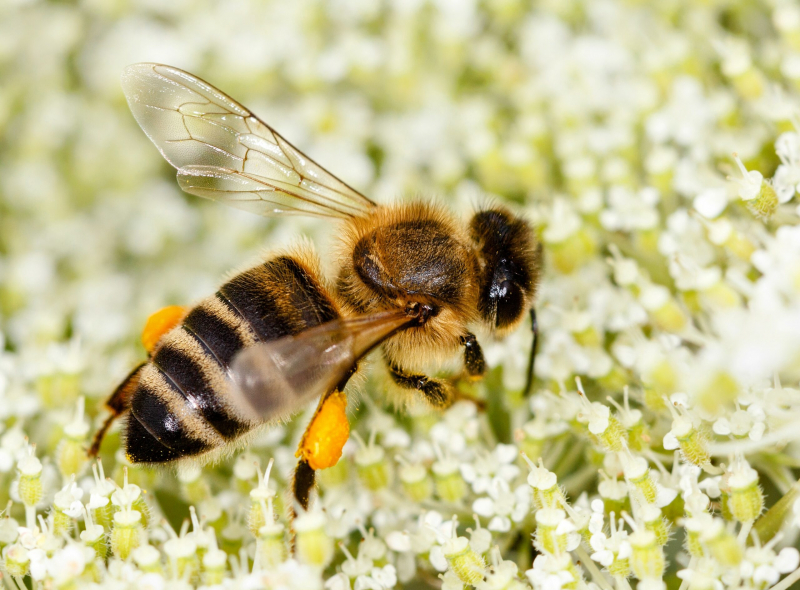Honey Bee
The next position on the list of the most dangerous animals in the world is the honey bee. The genus Apis of the bee clade, which includes honey bees, is a group of eusocial flying insects that are all indigenous to Afro-Eurasia. Humans are to blame for the current global distribution of honey bees after they introduced various subspecies into South America (early 16th century), North America (early 17th century), and Australia after bees spread naturally throughout Africa and Eurasia (early 19th century).
Honey bees are renowned for building long-lasting colony nests out of wax, for the size of their colonies, and for the abundance of honey they produce and store. These traits make honey bee hives a coveted foraging target for many species, including honey badgers, bears, and human hunter-gatherers. Although previously 7 to 11 species have been recognized, there are only eight recognized species of honey bees that are still alive today, with a total of 43 subspecies. Only a small portion of the 20,000 or so species of bees that are recognized as being alive today are honey bees.
You might be astonished to learn that in Australia, honey bees cause more fatalities each year than both spiders and sharks. This is because 3 percent of people are allergic to bee stings; therefore, if you are allergic, the prevalence of bees in the nation puts you at an increased risk of harm. Even people who are not allergic can experience severe symptoms including breathing difficulties.












